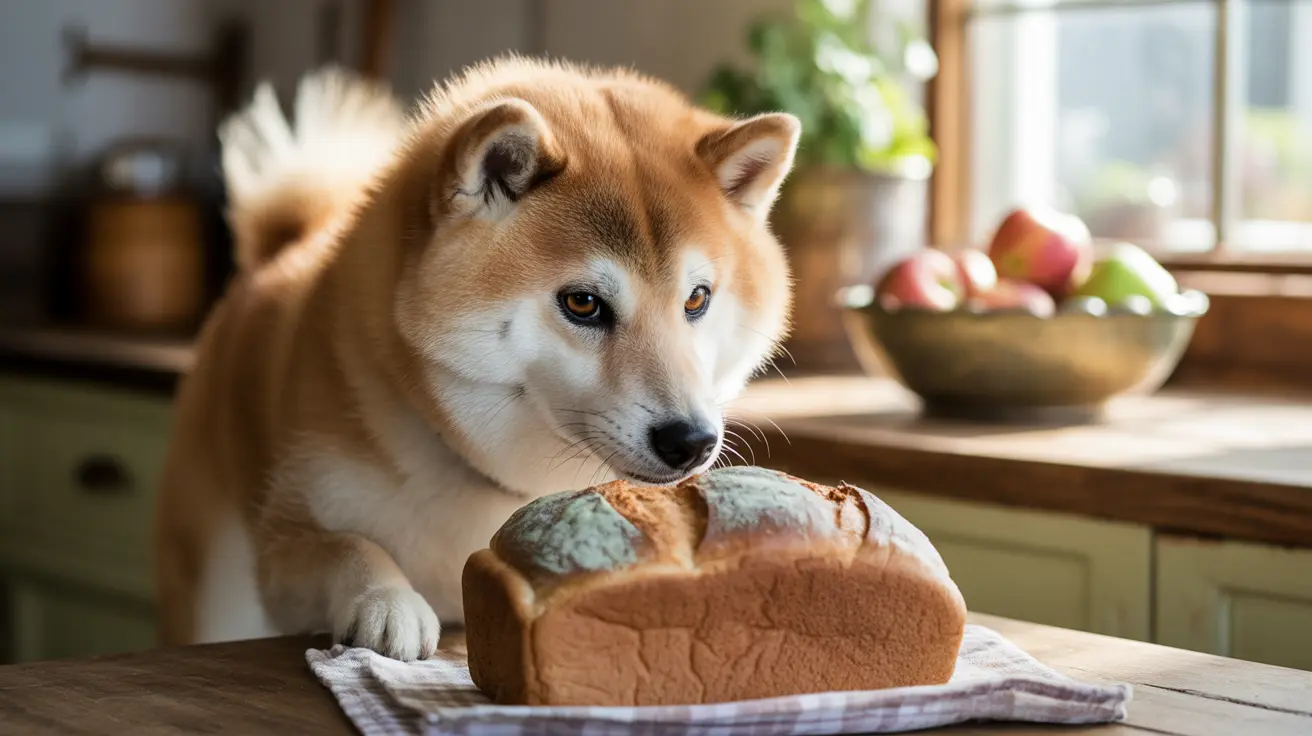Understanding the Dangers of Moldy Food for Dogs
When a dog eats moldy food, it can lead to serious health complications that require immediate veterinary attention. Mold produces dangerous compounds called mycotoxins, which can cause a range of symptoms from mild gastrointestinal upset to severe neurological problems and even liver damage.
As a pet parent, recognizing the risks and knowing how to respond quickly can make a crucial difference in your dog's recovery. This comprehensive guide will walk you through everything you need to know about moldy food consumption in dogs, from identifying symptoms to prevention strategies.
Types of Toxic Molds and Their Effects
Different types of mold can produce various mycotoxins that affect dogs in distinct ways. The most concerning types include:
Tremorgenic Mycotoxins
Penitrem A and roquefortine are commonly found on spoiled dairy products, bread, and nuts. These toxins can cause severe tremors and seizures in dogs, often within hours of consumption.
Aflatoxins
Most often found in grains and nuts, these toxins primarily affect the liver and can cause long-term damage. Symptoms may not appear for several days after exposure.
Recognizing the Signs of Mold Poisoning
Early detection of mold poisoning symptoms is crucial for successful treatment. Watch for:
- Vomiting and diarrhea
- Tremors or muscle shaking
- Excessive drooling
- Loss of coordination
- Elevated body temperature
- Seizures
- Lethargy or weakness
Immediate Steps After Exposure
If you suspect your dog has eaten moldy food, take these immediate actions:
- Contact your veterinarian or emergency animal hospital immediately
- Collect a sample of the moldy food (if safe to do so)
- Note the approximate time of ingestion
- Monitor your dog's symptoms
- Do not attempt to induce vomiting without veterinary guidance
Treatment Options and Recovery
Treatment typically involves a combination of approaches:
Decontamination
If caught early enough, veterinarians may induce vomiting and administer activated charcoal to prevent further toxin absorption.
Supportive Care
This may include IV fluids, anti-seizure medications, temperature regulation, and liver support depending on the symptoms and type of mycotoxin involved.
Prevention Strategies
Preventing access to moldy food is the best way to protect your dog:
- Store pet food properly in airtight containers
- Check expiration dates regularly
- Secure garbage bins and compost piles
- Clean up fallen fruit in your yard
- Monitor your dog during walks and outdoor activities
Frequently Asked Questions
What are the symptoms and timeline for a dog getting sick after eating moldy food?
Symptoms can appear within hours or up to 48 hours after ingestion. Initial signs often include vomiting and diarrhea, followed by tremors, seizures, or lethargy. Some toxins, like aflatoxins, may take several days to show liver-related symptoms.
Which types of moldy foods are most dangerous for dogs and why?
The most dangerous moldy foods include bread, dairy products, nuts, and grains. These foods commonly harbor tremorgenic mycotoxins and aflatoxins, which can cause severe neurological symptoms and liver damage respectively.
What should I do immediately if my dog eats moldy food or garbage?
Contact your veterinarian or animal poison control immediately. Collect a sample of the moldy food if possible, and monitor your dog closely for symptoms. Don't induce vomiting without professional guidance.
Can moldy food cause seizures or liver damage in dogs, and how can vets treat these conditions?
Yes, moldy food can cause both seizures and liver damage. Treatment includes anti-seizure medications, temperature regulation, IV fluids, and liver support medications. Early intervention typically leads to better outcomes.
How can I prevent my dog from accessing moldy food and mycotoxin exposure at home?
Secure garbage bins, store pet food properly, clean up fallen fruit, and keep compost areas inaccessible. Regular yard maintenance and supervision during walks can prevent access to potentially moldy items.
Conclusion
While moldy food ingestion can be serious, quick recognition of symptoms and prompt veterinary care usually lead to positive outcomes. Remember that prevention is always better than treatment, so take steps to secure potential sources of moldy food in and around your home.






